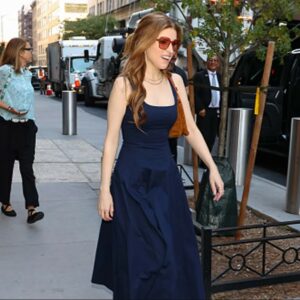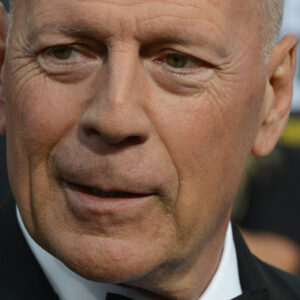In the constellation of modern-day stars, Emilia Clarke stands out not only for her beauty and grace but for her undeniable acting talent and versatility. Best known for her portrayal of Daenerys Targaryen in HBO’s monumental series Game of Thrones, Clarke’s rise to fame was meteoric. But while her journey may seem like an overnight success, it was, in fact, years in the making. Clarke’s early years were not characterized by red carpets and film premieres but by the grit, grind, and humble beginnings typical of a theater actor’s life. Her transition from the stage to the screen was gradual, but once she stepped into the spotlight, there was no turning back.
However, Clarke’s career isn’t just about the dragons and political intrigue of Game of Thrones. She’s proven herself a formidable talent across genres, displaying depth, charisma, and an innate ability to connect with audiences both on-screen and on-stage. As she continues to build on her remarkable career, a return to her theater roots has not only provided new opportunities but has also allowed her to refine her craft in ways only stage acting can offer.
Early Acting Journey and Theater Roots
Before Emilia Clarke became the “Mother of Dragons,” she was a young woman studying drama and cutting her teeth on the stage. Born in London and raised in Berkshire, Clarke showed an interest in acting at a very young age, inspired in part by her father, who worked as a sound engineer in the theater. The magic of live performances clearly left a lasting impression on the future star. She attended Drama Centre London, one of the most prestigious acting schools in the UK, where she honed her craft among peers destined for greatness.
The stage provided Clarke with an essential foundation in her acting career. Theater, with its unfiltered immediacy, requires actors to connect with their audience in real-time, a challenge for even the most experienced performers. It was here that Clarke first learned the importance of timing, the necessity of developing a character with depth, and the art of commanding a room. These skills would serve her well later when she moved to television and film, but her heart remained in the theater.
Her return to the stage in more recent years isn’t surprising when you consider her beginnings. For Clarke, theater is a homecoming of sorts—a way to reconnect with her roots and challenge herself in new and unexpected ways. It’s in these live performances that she can test the boundaries of her abilities and experiment with roles she might never have attempted on-screen.
Significance of Stage Acting in Honing Skills
While film and television acting offer their own unique challenges—particularly the grueling pace of television production and the fragmented, out-of-sequence filming schedule of movies—nothing quite compares to the demands of stage acting. The theater leaves no room for error. There are no second takes. When Clarke steps onto the stage, she must inhabit her character fully, engaging in a real-time, unbroken interaction with her fellow actors and the audience.
The immediacy of theater requires actors to perfect their timing, both comedic and dramatic, in a way that film acting often does not. The actor must be attuned to every nuance, every line, and every cue. It’s a high-wire act where a single misstep could unravel an entire scene. For someone like Clarke, who became famous through film and television, the decision to return to the stage is a testament to her dedication to her craft. It shows a willingness to risk vulnerability in the pursuit of artistic growth.
In addition, stage acting demands emotional depth and stamina that differs from screen performances. While a film scene may be emotionally intense, the actor can rest between takes. On stage, however, Clarke must sustain her emotional intensity from the opening scene to the final curtain. This type of consistency requires incredible focus, energy, and emotional range—qualities Clarke has demonstrated time and time again.
Furthermore, stage actors have the unique experience of interacting directly with the audience. Unlike film and television, where the performance is mediated by a camera, the theater brings actor and audience into immediate, tangible contact. For Clarke, who has grown accustomed to the distanced, cinematic medium, this live interaction is a valuable tool, one that keeps her attuned to the subtleties of her craft.
Key Stage Performances
Clarke’s theater resume may not be as extensive as her work in film and television, but the roles she has taken on have been significant. One of her first major forays onto the professional stage came in 2013 when she starred in Breakfast at Tiffany’s, a Broadway adaptation of Truman Capote’s novella. Clarke took on the iconic role of Holly Golightly, previously immortalized on film by Audrey Hepburn. It was a bold choice, as the part is closely associated with Hepburn’s indelible performance. Yet, Clarke brought her own interpretation to the role, infusing Holly with both charm and vulnerability. Critics may have been mixed in their reviews, but Clarke’s willingness to take on such a beloved character demonstrated her ambition and confidence as an actress.
In 2020, Clarke returned to the stage in a production of Anton Chekhov’s The Seagull at London’s Playhouse Theatre, taking on the role of Nina. This role marked another major milestone in Clarke’s stage career, as The Seagull is one of Chekhov’s most challenging and emotionally demanding plays. In it, Clarke played a young woman full of dreams and aspirations, only to be crushed by the harsh realities of life and love. The role is one that requires great emotional depth, and Clarke’s portrayal was met with positive critical acclaim. She brought a nuanced, heartfelt performance that showcased her growth as an actress since her earlier theater days.
These stage performances are important not just because of the high-profile nature of the roles but because they represent a return to Clarke’s roots. In Breakfast at Tiffany’s and The Seagull, she has taken on roles that require a deep emotional commitment, further honing her skills and proving her ability to command the stage.
Challenges and Growth
Theater, as rewarding as it can be, also presents its own set of challenges. For Clarke, who became a household name through her work on Game of Thrones, stepping back into the world of live performance was undoubtedly a daunting task. Television acting, with its controlled environment and opportunities for multiple takes, offers a safety net of sorts. Theater, on the other hand, offers none.
When Clarke took on the role of Holly Golightly in Breakfast at Tiffany’s, she had to contend not only with the legacy of the character but also with the pressures of performing live in front of a Broadway audience. Reviews for the production were mixed, with some critics taking issue with the adaptation itself rather than Clarke’s performance. Nonetheless, Clarke faced the experience head-on, learning valuable lessons about endurance, audience interaction, and the intricacies of live performance.
Her role in The Seagull was similarly challenging, particularly given the emotional demands of the character. Nina, Clarke’s character, is a young woman whose dreams are shattered over the course of the play. It’s a role that requires vulnerability and emotional complexity, two things Clarke delivered in spades. While performing Chekhov is difficult for any actor, Clarke embraced the challenge, and the result was a performance that added new layers to her skillset.
It’s clear that these stage experiences have contributed significantly to Clarke’s growth as an actress. She has learned to balance vulnerability with strength, to inhabit characters in a way that resonates with audiences, and to push herself beyond the safety of film and television. These experiences have shaped her into a more versatile, well-rounded performer.
Conclusion
Emilia Clarke’s career is a testament to her versatility as an actress. From her breakout role in Game of Thrones to her memorable performances in film, she has proven time and again that she can rise to any challenge. But it is her return to the stage that has allowed her to hone her skills in ways that screen acting cannot. Through roles in productions like Breakfast at Tiffany’s and The Seagull, Clarke has reconnected with her theater roots, challenging herself and growing as a performer.
Stage acting has sharpened her timing, deepened her emotional range, and taught her the importance of live audience interaction. These lessons have undoubtedly influenced her film and television work, making her a more dynamic, layered actress. As she continues to take on new roles, it’s clear that Clarke’s development as an actress is far from over. Her return to the theater has been a crucial part of that journey, reminding us all of the importance of continually challenging oneself in the pursuit of artistic excellence.





